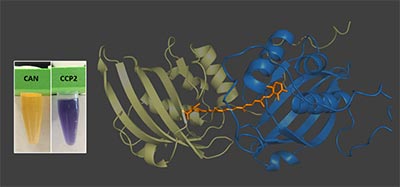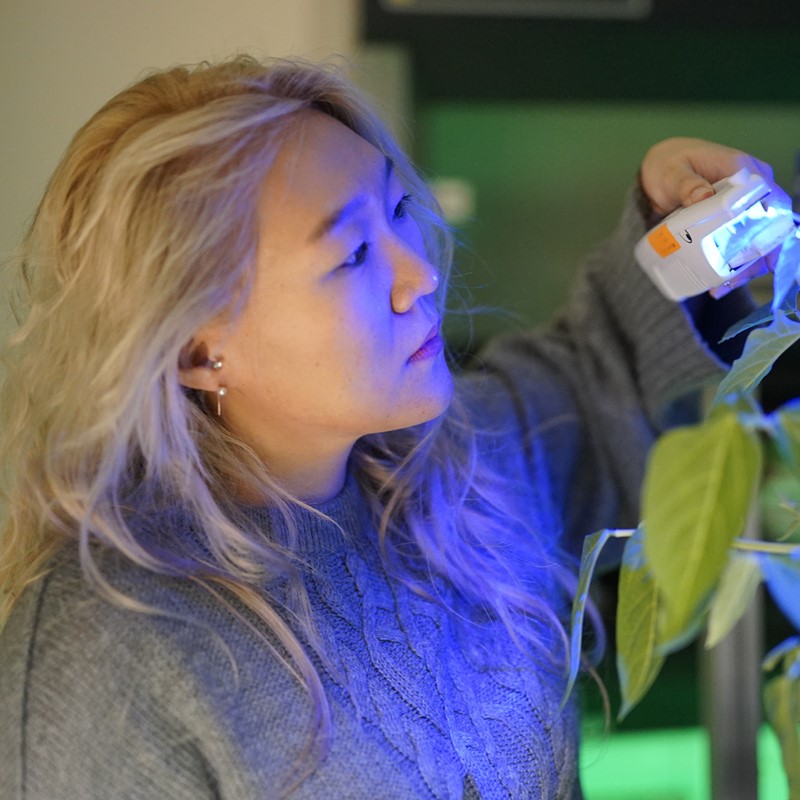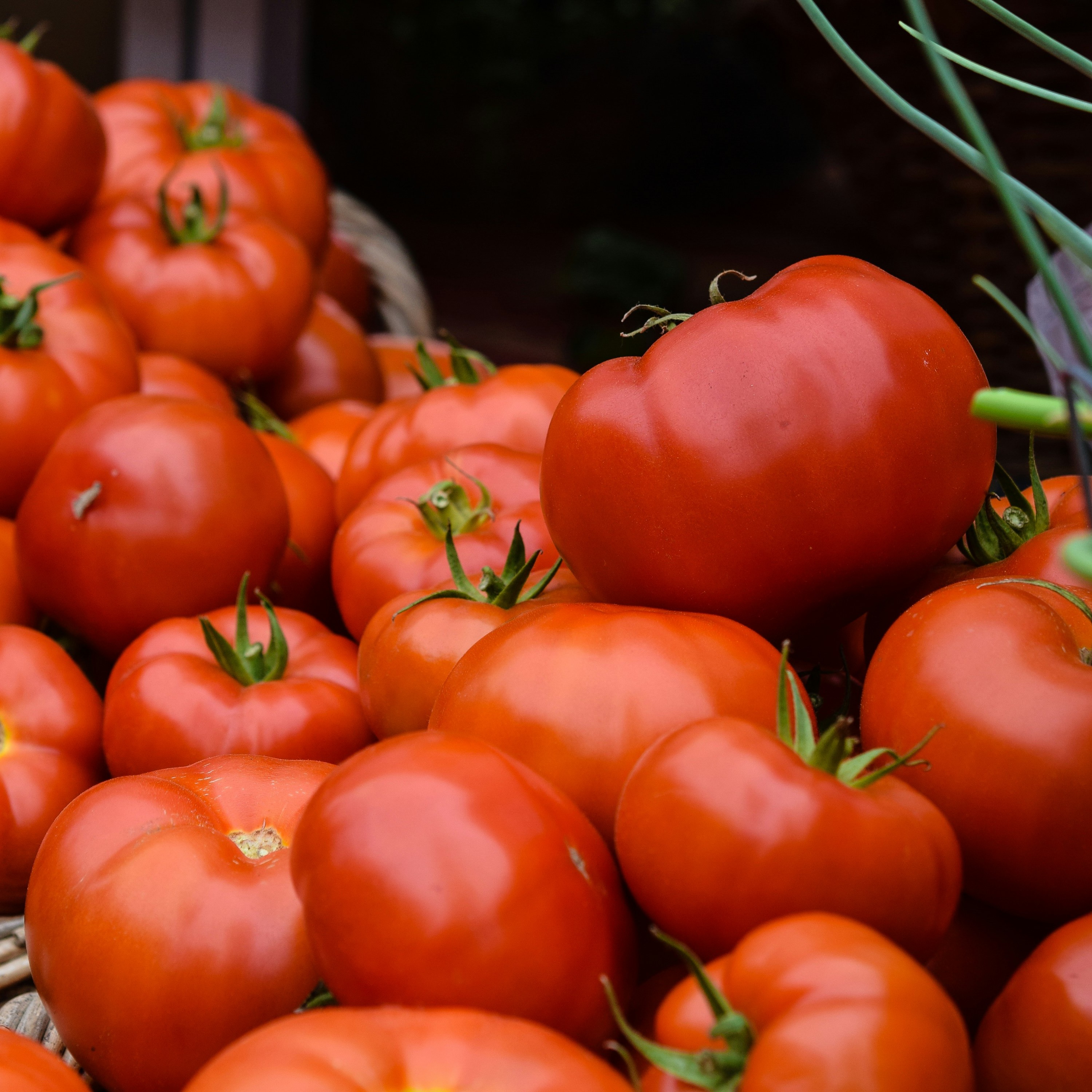Identifying a new family of carotenoid-binding proteins in cyanobacteria
In a study published in Scientific Reports, scientists describe a new family of carotenoid binding proteins.

Scientific Achievement
The work is the first structural description of a carotenoid binding protein called C-terminal domain-like carotenoid protein (CCP2).
Significance and Impact
CCP2 is a cyanobacterial protein that is a member of the widespread NTF2-like superfamily of proteins. Our structural analysis is the first insight into how such a protein allocates the carotenoid pigment, which usually plays a protective role within the host organism. Given the ubiquity of NTF2-like proteins across all domains of life, perhaps other organisms, such as photosynthetic algae and plants, have members of this carotenoprotein family that await discovery.
Research Details
- Bioinformatic analysis has revealed the existence of a new family of proteins, homologs to the C-terminal domain of the Orange Carotenoid Protein (OCP), the C-terminal domain-like carotenoid proteins (CCPs).
- In this study, we purified holo-CCP2 directly from Fremyella diplosiphon and determined that it natively binds canthaxanthin.
- Structural analysis using small-angel X-ray scattering (SAXS) characterized the structure of this protein in its two main oligomeric states: dimer and tetramer. A single carotenoid spans the two CCPs that form the dimer. In addition, analysis with X-ray footprinting-mass spectrometry identifies residues for carotenoid binding within the CCP2.
- The unusual spectroscopic properties of this protein, an extreme red shift (ca. 80 nm) of the absorption maximum of the carotenoid bound by the CCP2 dimer is also discussed. These data provide the first structural description of carotenoid binding a protein consisting of only an NTF2 domain.
Related people: Maria Agustina Dominguez-Martin, Michal Hammel, Sayan Gupta, Sigal Lechno-Yossef, Markus Sutter, Daniel J. Rosenberg, Yan Chen, Christopher J. Petzold, Corie Y. Ralston, Tomáš Polívka, Cheryl A. Kerfeld (CA)



